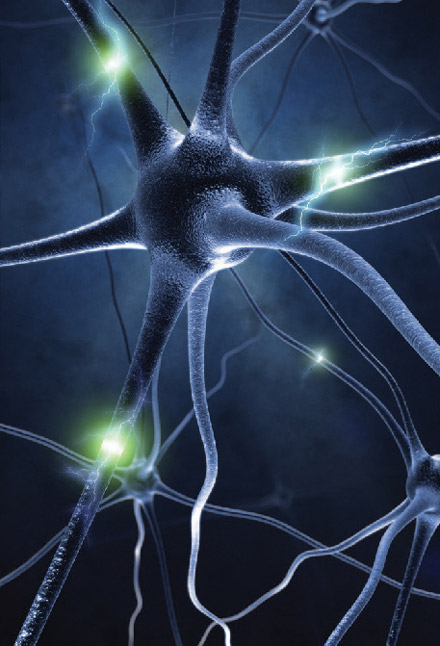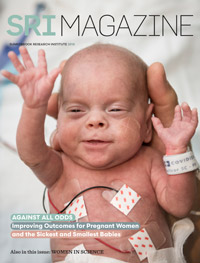What determines the specific identities of brain cells?

Study zeroes in on the importance of two genes
By the time a person reaches adulthood, they are expected to have figured everything out, including who they are. As for the neurons in their brain, however, their identities are determined long before then.
Understanding how these cells acquire their unique fates is a big part of Dr. Carol Schuurmans’ identity as a neuroscientist. She studies how neurons develop in the neocortex, the outermost layer of the brain responsible for sensory perception, movement and language. “This part of the brain is formed of six layers of neurons,” says Schuurmans, a senior scientist in Biological Sciences at Sunnybrook Research Institute and a professor at the University of Toronto. She slices her hands through the air to indicate each layer as she counts backwards from the sixth layer at the bottom to the first layer at the top. “Within each of these layers, [the neurons] have separate phenotypes,” she explains. Phenotypes are the observable traits like skin colour and height that result from a combination of genetic and environmental influences.

Dr. Carol Schuurmans studies how neural precursor cells develop into mature brain cells, with the ultimate goal of replacing neurons lost in neurodegenerative diseases.
In a study published in the Proceedings of the National Academy of Sciences, Schuurmans and her colleagues zeroed in on the fifth and sixth layers of neurons in the neocortex. “These lower layers are the neurons that communicate with the rest of the nervous system. They project out of the neocortex down to the spinal cord and other regions of the brain,” she says. The researchers were particularly interested in layer 5 neurons, also known as upper motor neurons, because these are the nerve cells that are damaged in amyotrophic lateral sclerosis (ALS), which gradually paralyzes people as their brains lose the ability to communicate with their spinal cord and muscles. “This paper really sets the groundwork for understanding how these layer 5 neurons acquire their specific identities, so [that] we can try and make new layer 5 neurons in a disease model,” Schuurmans says.
Unlike many cells in the body, neurons stop dividing once they become neurons. The nerve cells then receive further instructions that enable them to gain specialized functions, not unlike doctors who undergo additional training to become specialists in cancer care or emergency medicine. Prior to Schuurmans’ study, the genetic circuitry that led a neuron down one path and not another had been mapped out. She wanted to know what factors at the pre-neuron stage influence a nerve cell’s final destiny. Extending the analogy, what experiences in a medical student’s early education determine whether they became a cardiologist or a pediatrician?
The researchers focused on two genes called Neurog2 and Ascl1 that are known to play a key role in coaxing neural precursor cells into full-fledged mature neurons. This process, known as neurogenesis, is exquisitely coordinated. Each neuron is born at precisely the right time and place to become part of a functional brain. Using a preclinical model, the researchers found that loss of Neurog2 and Ascl1 in neural progenitors causes neuronal specification to go awry in the neocortex. Cells ended up with the wrong layer identities—those destined to have a lower layer fate acquired an upper layer fate, instead, for example—because they were born at the wrong times. They also showed that both Neurog2 and Ascl1 are required for the fifth layer neurons to form. The researchers further demonstrated that the two genes control neuronal cell fate by controlling the levels of downstream neural regulators.
“People had known that neural identity is specified at the progenitor level,” says Schuurmans. “What people did not know was ‘What are the factors in progenitors that are these instructive determinants?’” This study is the first to show that Neurog2 and Ascl1 acting in progenitor cells contribute to neuronal identity in the neocortex. Schuurmans and her team are now using this knowledge to devise strategies to make new functional layer 5 neurons, one application of which will be to replace those lost in ALS. “We’re targeting ALS, but the possibility is that it can be targeted to other diseases as well.”
— Betty Zou
Schuurmans’ research is funded by the Canadian Institutes of Health Research. She holds the Dixon Family Chair in Ophthalmology Research.



